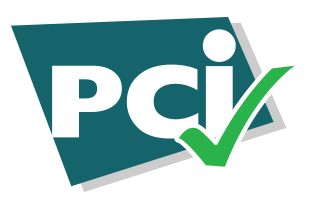A credit review process is needed to ensure that a business does not grant credit to accountholders who are unable to procure payments. Otherwise, it may incur significant bad debt losses. The credit department handles all credit reviews.
The department may receive paper copies of sales orders from the order entry department, documenting each order requested by a customer. In this manual environment, the receipt of a sales order triggers a manual review process where the credit staff can block the orders from reaching the shipping department unless it forwards an approved copy to the shipping manager. The order entry procedure for a manual system is outlined below:
- Receive sales order. The order entry department sends a copy of each sales order to the credit department. If the customer is a new one, the credit manager assigns it to a credit staff person. A sales order from an existing customer will likely be given to the credit person already assigned to that customer.
- Issue credit application. If the customer is a new one or has not done business with the company for a long time, send them a credit application and request that it be completed and returned directly to the credit department. This may be done by e-mail or a web page to speed the application process.
- Collect and review credit application. Upon receipt of a completed sales order, examine it to ensure that all fields have been completed, and contact the customer for more information if some fields are incomplete. Then collect a credit report, customer financial statements, bank references, and credit references.
- Assign credit level. Based on the collected information and the company’s algorithm for granting credit, determine a credit amount that the company is willing to grant to the customer. It may also be possible to adjust the credit level if a customer is willing to sign a personal guarantee.
- Hold order (optional). If the sales order is from an existing customer and there is an existing unpaid and unresolved invoice from the customer for more than $___, place a hold on the sales order. Contact the customer and inform them that the order will be kept on hold until such time as the outstanding invoice has been paid.
- Obtain credit insurance (optional). If the company uses credit insurance, forward the relevant customer information to the insurer to see if it will insure the credit risk.
- Verify remaining credit (optional). A sales order may have been forwarded from the order entry department for an existing customer who already has been granted credit. In this situation, the credit staff compares the remaining amount of available credit to the amount of the sales order, and approves the order if there is sufficient credit for the order. If not, the credit staff considers a one-time increase in the credit level in order to accept the order, or contacts the customer to arrange for an alternative payment arrangement.
- Approve sales order. If the credit staff approves the credit level needed for a sales order, it stamps the sales order as approved, signs the form, and forwards a copy to the shipping department for fulfillment. It also retains a copy.
- File credit documentation. Create a file for the customer and store all information in it that was collected as part of the credit examination process
Procure-to-Pay (P2P) Basics
The Procure-to-Pay (P2P) process is the coordinated and integrated action taken to fulfill the requirement for goods or services in a timely manner at a reasonable price. In simple terms, the P2P cycle involves integrating purchasing and accounts payable systems to create greater efficiencies.
The P2P process is a part of the larger procurement management process. The P2P cycle involves a few sequential stages like identification of needs, invoice approvals, and payments to vendors. If executed well, the P2P process can run smoothly guaranteeing optimized efficiencies.
The P2P process flow encompasses several different activities like need identification, sourcing of goods, requisition, issuing purchase orders, receiving orders and supplier invoices, account payables, and reporting. Automating the entire P2P process will open doors to a plethora of benefits like strengthened compliance and control, transparency in the procurement cycle, and reduced margin for human error.
Simply put, P2P is a process whereby a requisition is created, an order is placed and, once received, payment is made based on the invoice by the supplier. What P2P actually refers to is an automated system that integrates the procurement process with accounts payable. This streamlines the process to ensure accuracy and create cost and time efficiencies.
How can automating the P2P cycle help your organization?
Process automation with an efficient procure-to-pay software can single-handedly help your organization achieve control on processes and improve global spend. Digitalizing your procurement process with a P2P solution can help your company buy from preferred suppliers at negotiated and competitive prices without the hassles of manual paperwork and spreadsheets.
An efficient and easy-to-use procurement software can help companies in the following ways:
- Reducing errors and consolidating the most manual commerce processes which in turn, improves efficiency and promotes transparency.
- Driving bottom-line savings which maximize the value of sourcing negotiations.
- Improves spend and effectively controls costs.
- Helps to free up resources and saves time.
- Streamlines the entire procurement process which boosts profits and keeps a check on maverick spending.
The importance of Procure-to-Pay (P2P) to businesses
An organization’s procurement and accounts payable will greatly benefit if the entire procure-to-pay process is automated. Automating your P2P cycle will provide a wide range of benefits for your purchasing process.
Digital procurement solutions and P2P automation will leave your procurement teams with a lot of valuable time in their hands. This will help in improving and managing spend and even supply chain management.
Here are a few improvements you will notice because of P2P process automation:
Increased visibility and transparency
Automating the P2P process gives deeper insights into the supply chain of your organization i.e. it provides visibility throughout the supply chain. This enables the buyers and the suppliers the ability to view invoice statuses in real-time.
Improved supplier relationships
Process automation means that the entire P2P cycle is automated to generate maximum efficiencies in your company. This benefits the suppliers as well since the suppliers can know when they will receive payment. They can make better decisions with this information and can resolve disputes quicker. This promotes goodwill and allows the buyer greater visibility.
Lesser invoice processing costs
Automation means less or no paperwork which enables time and cost savings. The employees in your company will have more free time to look after strategic initiatives rather than be caught up in repetitive tasks.
Streamlined procurement processes
In simple terms, when the P2P cycle is automated, there is connectivity throughout the company i.e. requisitions are created faster and orders are approved quickly. An efficient P2P process also helps in selecting appropriate suppliers based on data generated electronically. All of this can be tracked easily because of increased visibility and transparency.
Enhanced negotiation power
A good P2P process will lead to better supplier relationships and when suppliers have confidence in their payment status, they might offer better terms that are more advantageous to buyers while still ensuring they get their fair share of the revenue. This will help them grow their business simultaneously.
Better decision-making due to data and spend transparency
Real-time reporting is one of the biggest advantages of automating the P2P process. A powerful and dynamic P2P process offers robust on-demand reporting capabilities. Real-time reporting can help companies gain more control over their cash flow and working capital.
Steps in the Procure-to-Pay (P2P) process
We just understood that companies that do not implement a digitized process to automate the P2P process can incur significant losses which can spread over an entire organization. Lack of Purchase Orders (POs) can lead to huge losses as the company will be dependent heavily on manual POs which are subject to human error.
The 8 steps mentioned below are the basic steps that make up the P2P process and help an organization achieve bottom-line success.
1: Identification of needs
The first step is identifying and determining the need for specific goods and services and setting out a budget that is available for the proposed project.
2: Creating a purchase requisition
Once the need identification is done and approved by the management, a request goes out to the procurement department. This is what kicks off the P2P process.
3: Creating a purchase order (PO)
A purchase order is created from the approved purchase requisition. Once the procurement department receives a requisition, they will go through a list of suppliers and select the best supplier for the purpose. PO is then created and automatically routed for approval and transmitted to the supplier.
4: Receipt of goods/services
Once the supplier delivers the promised goods or fulfills the service, the buyer will inspect the received goods/services to ensure that it complies with the contract terms. After this, the procurement team will enter shipment information into the system. This goods receipt is then approved or rejected based on the standards specified in the contract or order.
5: Supplier performance
After the above step, the supplier performance is then evaluated based on the data collected. The supplier is evaluated on various parameters like quality of products or services, on-time delivery, contract compliance, responsiveness, and total cost of ownership (TCO). Non-performance by a supplier is taken into consideration for future references.
6: Invoice matching
So far, all the steps were handled by the procurement department. This is where the accounts payable department comes in. Invoices are sent by the supplier electronically through the supplier portal available in P2P solutions or via email or fax. The e-invoice is automatically matched against the PO and the goods received. If the items in the invoice match within agreed terms and conditions, the invoice is automatically sent further for approval.
7: Approval workflow
When your company’s P2P process is automated, invoices that pass the 2-way or the 3-way match go through the organization’s (Enterprise Resource Planning) ERP for payment. This process is usually automated by an invoice approval workflow solution.
8: Vendor payment
Once the accounts or the finance department receive the final approved invoice, they will process the payments as per the contract terms. A payment made to the supplier will be one of the following – advance, partial, installments, final or holdback, or retention payments.
Best practices in the P2P process
These best practices can help your organization improve the efficiency and effectiveness of your procure-to-pay process.
- Implement an automated procure-to-pay software
- Make sure that the P2P process is transparent and traceable at all times
- Increase collaboration between procurement and Accounts Payable (AP)
- Improve supplier engagement and satisfaction
- Optimize inventory
- Contract management should be streamlined
- Develop measurable goals and track performance
How to maintain an efficient procure-to-pay system?
Once the P2P cycle is automated, it is essential that it is in optimal working order and requires attention to detail. For this, the accounts payable team and the procurement team maintain constant contact with suppliers. Fostering good working relationships with vendors is vital to an organization. This inspires vendors to negotiate in good faith with customers who pay bills on time and fulfill their commitments.
Supply chain management and supplier relationship management are a high priority when it comes to maintaining process efficiency and data management for procurement professionals. AP and procurement professionals aim to achieve strategic sourcing while keeping costs low across the purchasing process.
However, the true benefits of a comprehensive P2P solution lies in its ability to foster open communication and create complete transactional transparency between the procurement and the accounts payable teams.
For example:
- Purchase orders and invoicing cycles are streamlined because of centralized data management, automatic routing, alerts and notifications, and contingencies. This ensures automatic three-way matching.
- The simplest way to bring your data together in one place is by integrating with your existing Enterprise Resource Planning system (ERP) and accounting software. This gives mobile-friendly access for all your stakeholders.
- One of the biggest advantages is that vendor management is vastly improved because of real-time reporting, total data transparency, and centralized contract management.
- Adopting and automating a P2P system means building strategic supplier relationships which allows businesses to forge powerful partnerships with their best suppliers while letting go of under-performing suppliers.
- An automated P2P system blocks out maverick spending, invoice fraud, duplicate/late payments, and late fees which can help in capturing early-payment discounts.
A powerful P2P process can be forged when the key players in a procurement process have necessary tools to analyze and optimize spend, vendor management, and workflow efficiency. Such a P2P cycle can help an organization build a strong source of savings and value addition.




